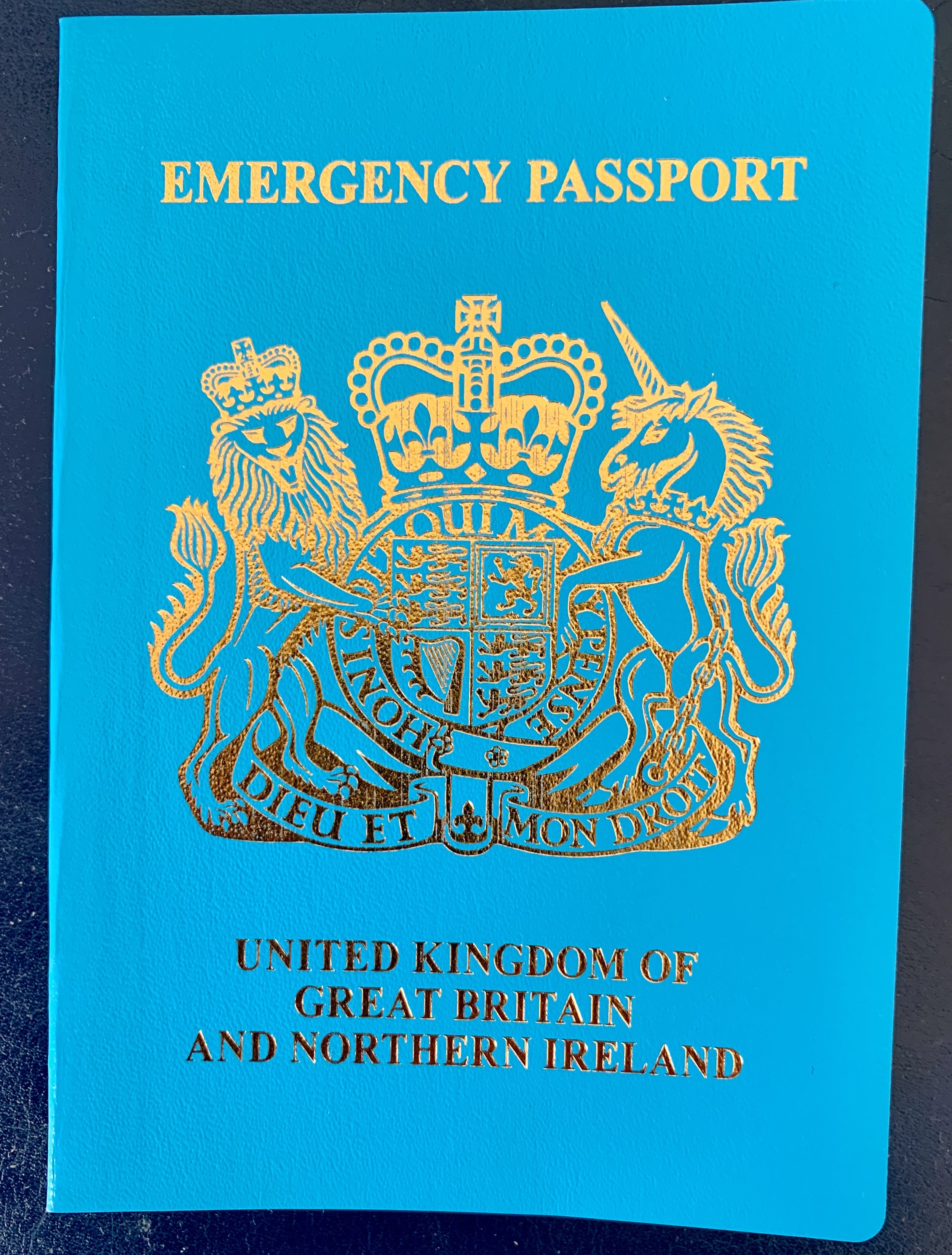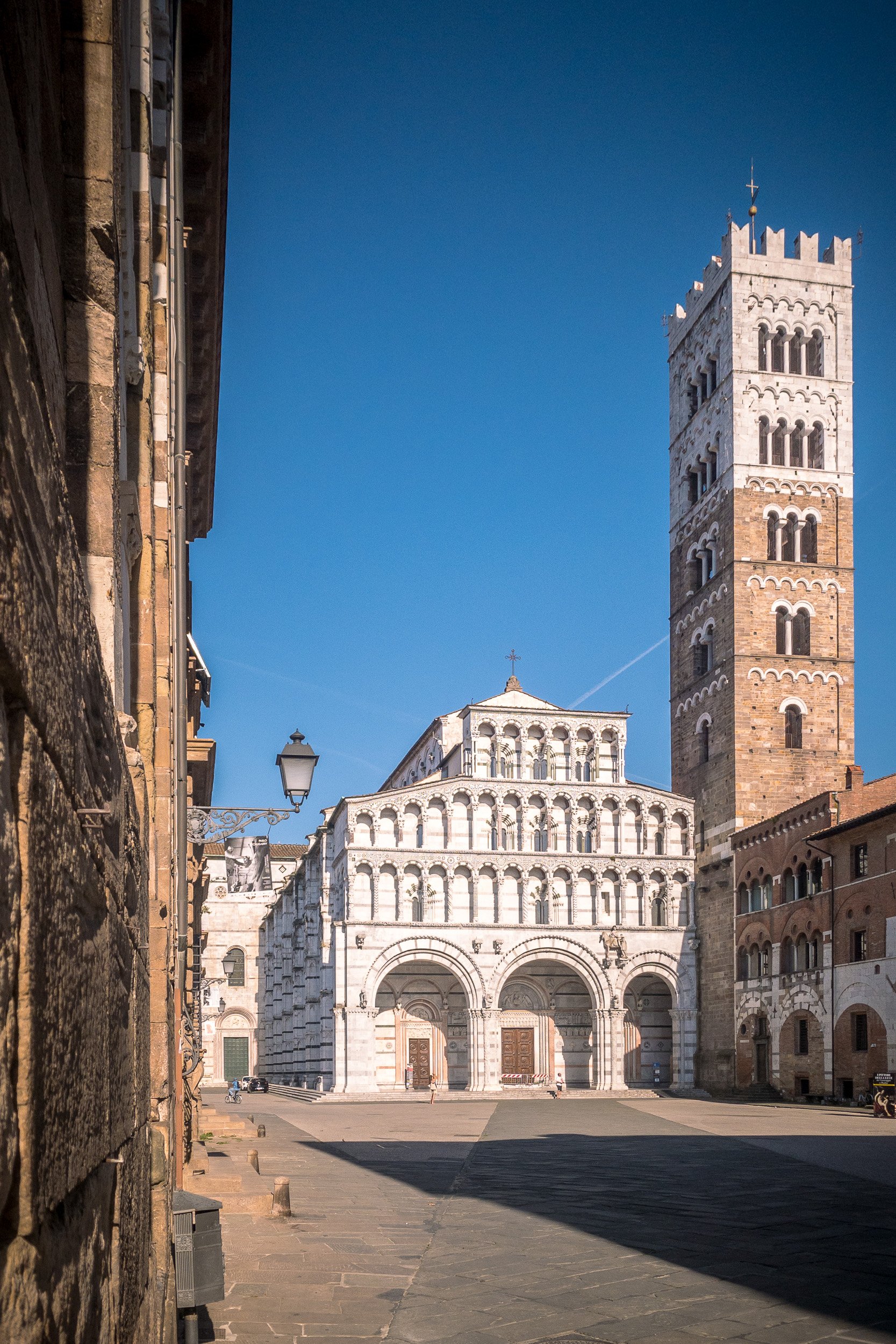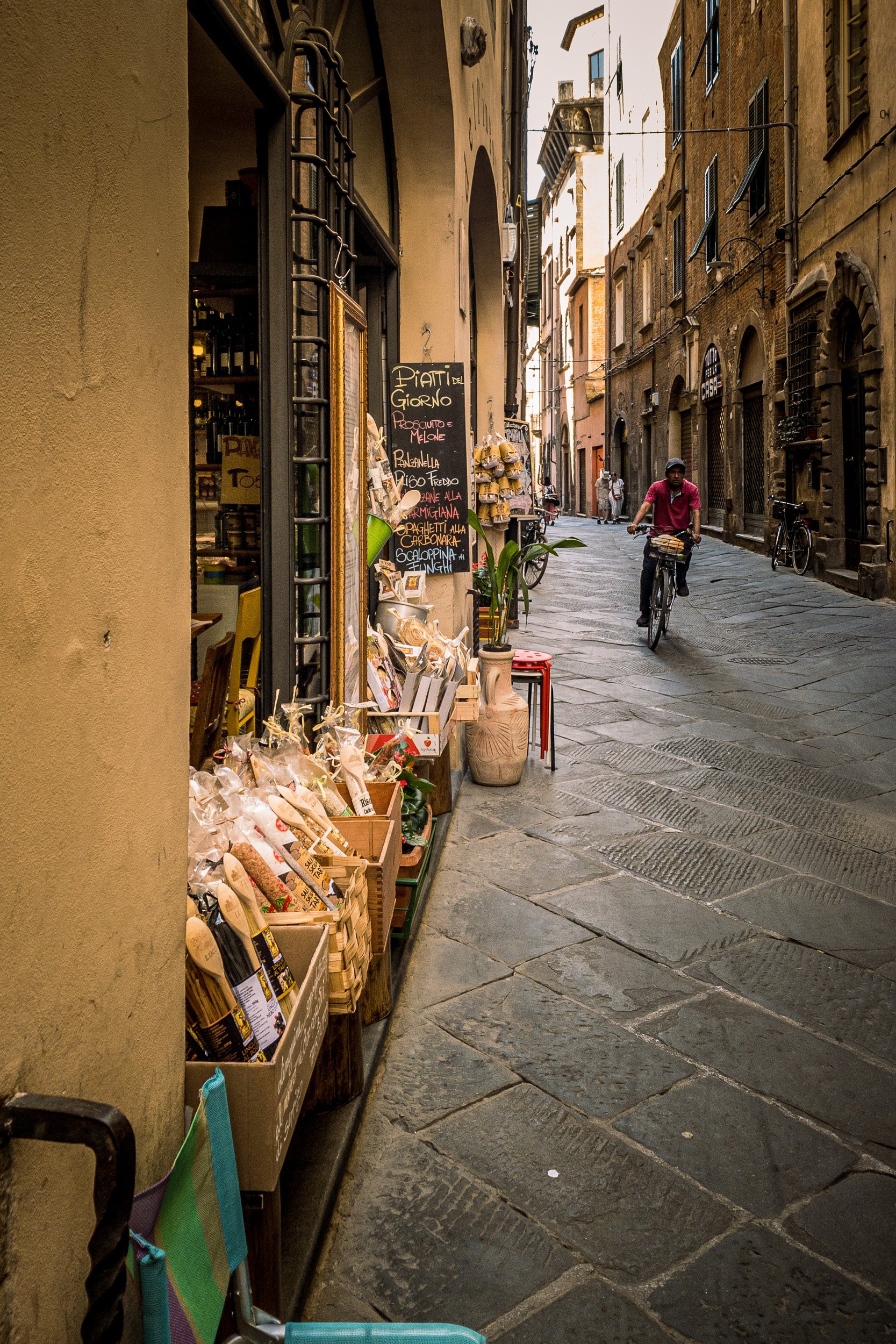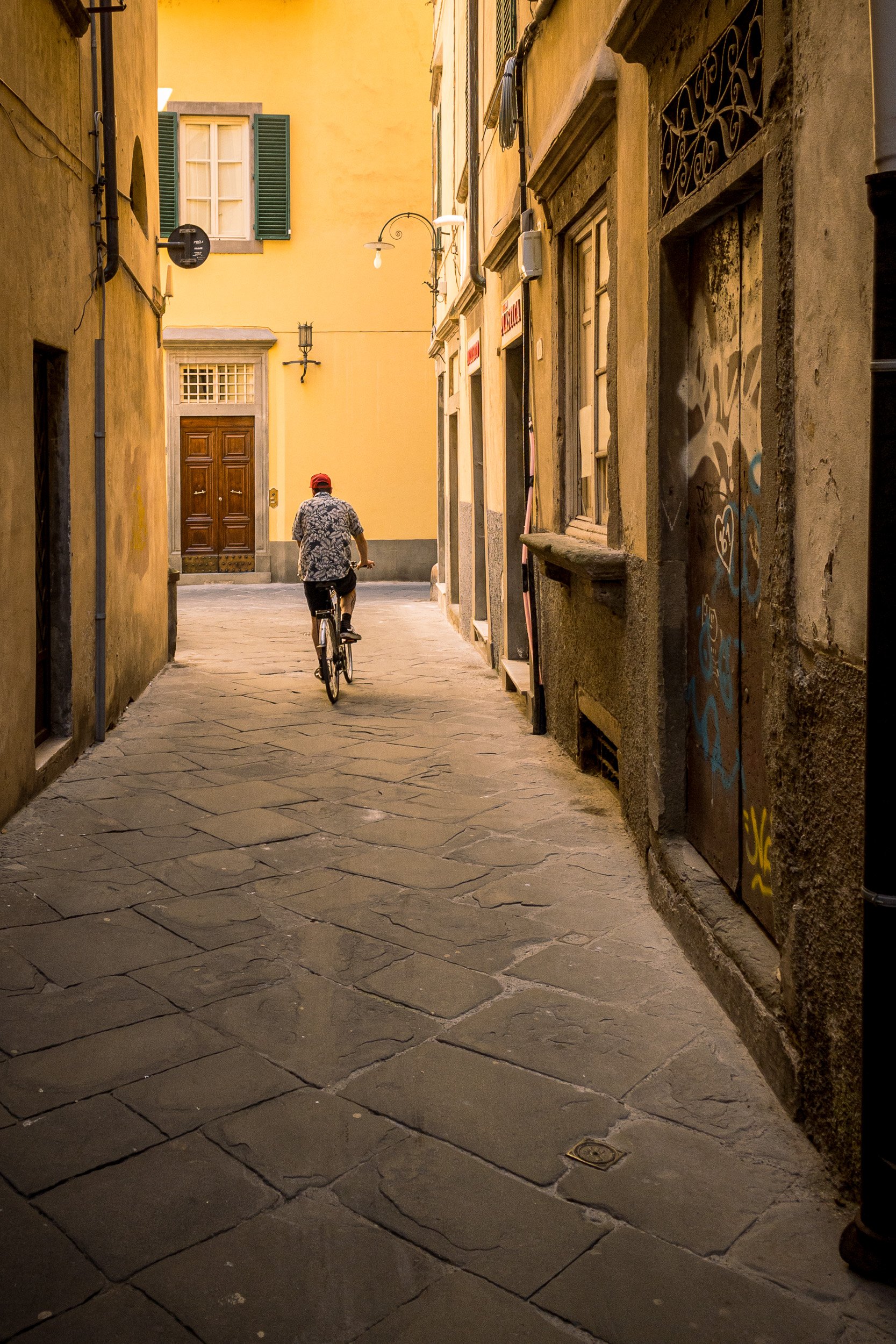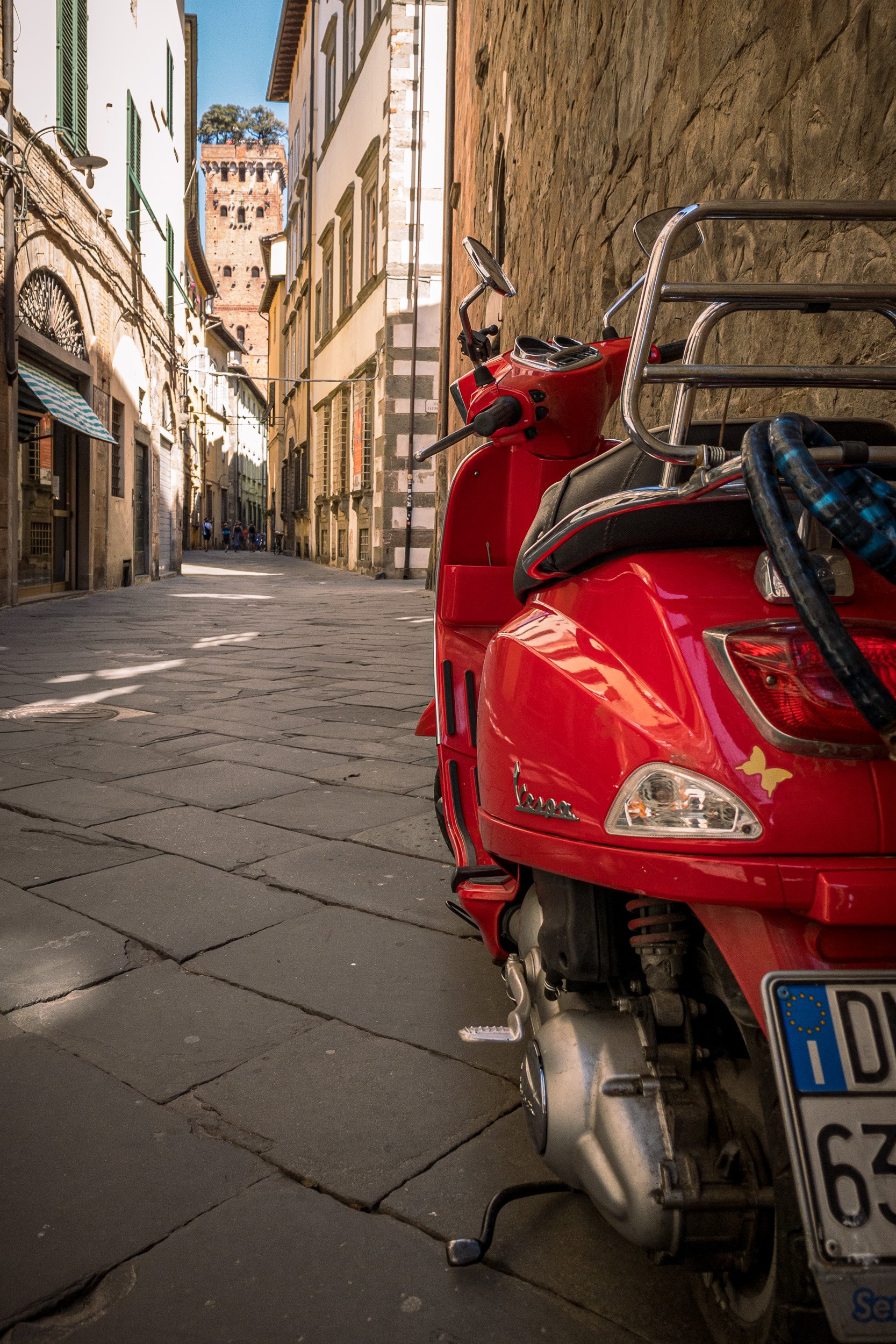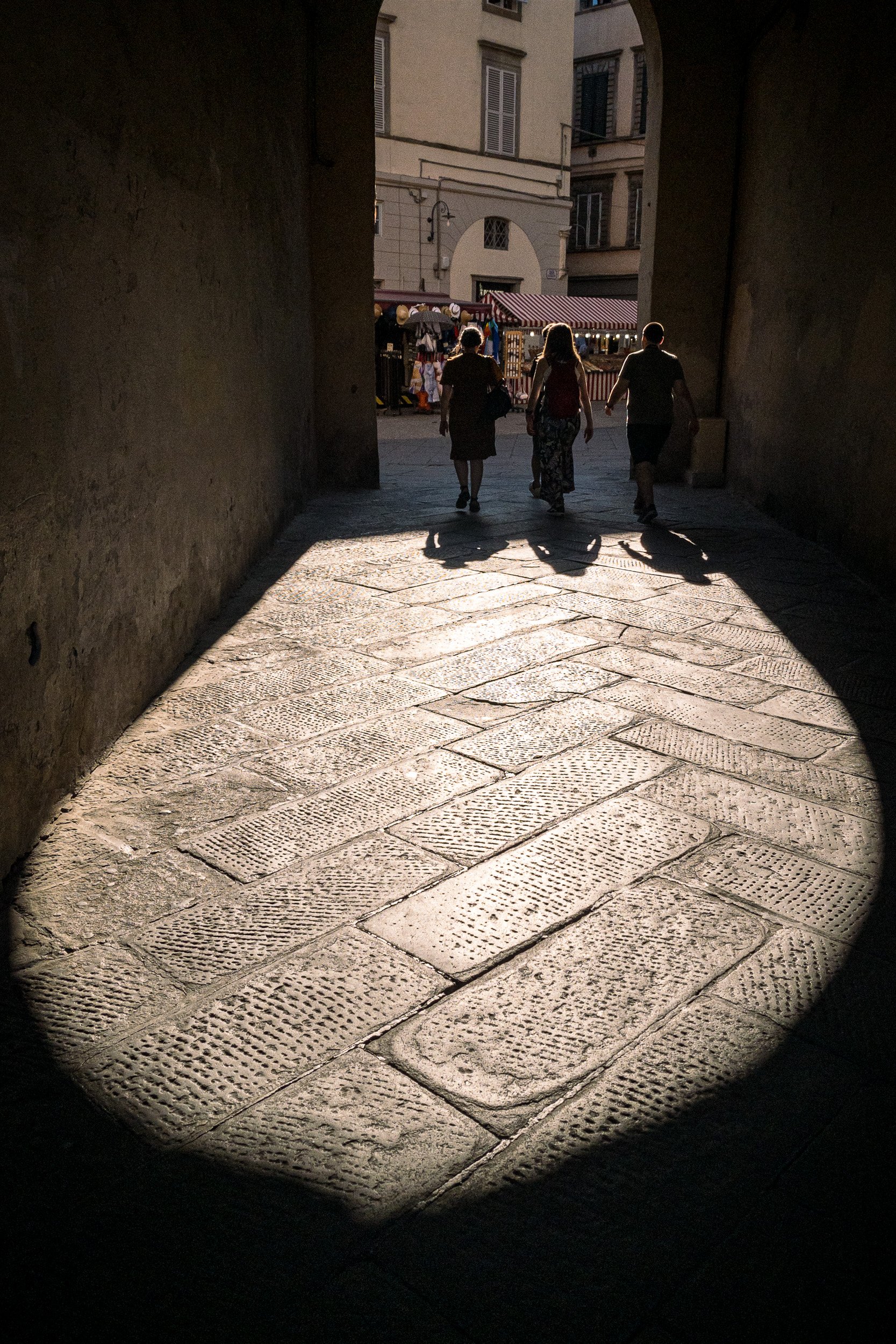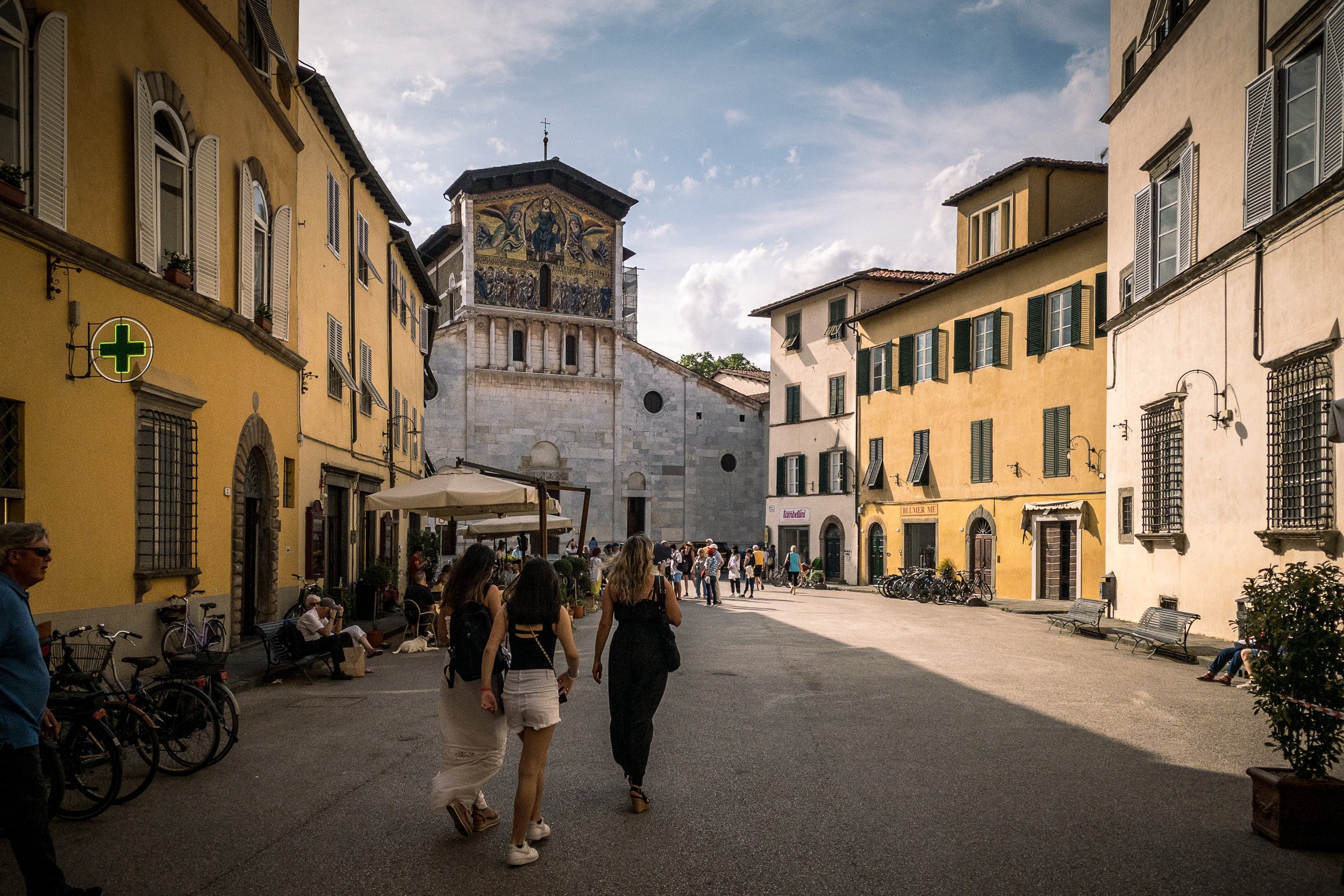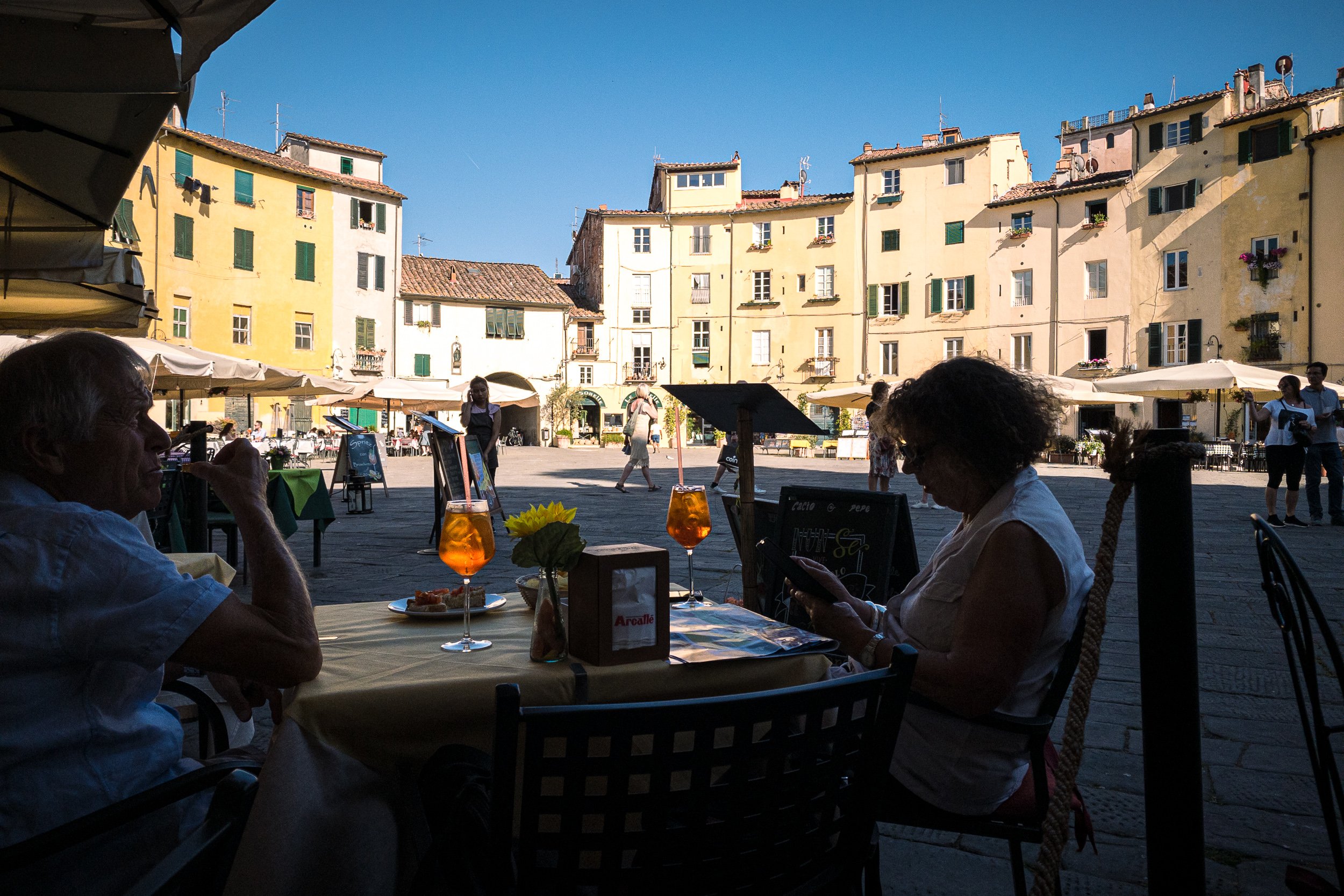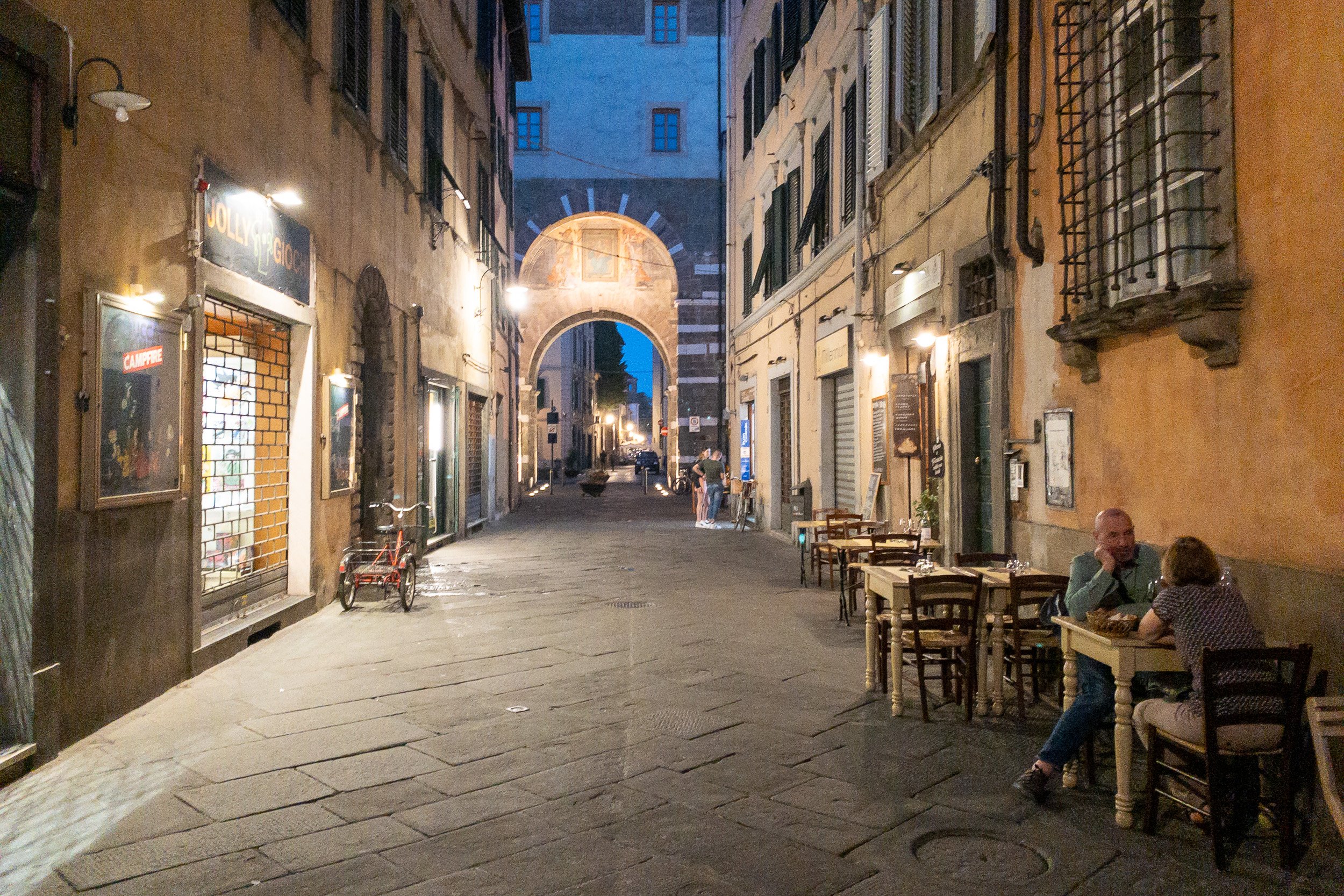Eight Days in Italy – from the Italian Riviera to Tuscany via the Polizia Ferroviaria & the British Embassy
This is an account of a trip to Italy, in May 2022, which had all the makings of an enjoyable week - Italy, family & friends, Italian food and wine, beautiful towns and a little bit of culture - but which didn’t quite go according to plan.
The intention was for my wife & I to travel to Sestri Levante, on the Cinque Terra, spend four days there, taking in a family birthday party, and then travel down to Lucca in Tuscany, for a further four days, prior to flying home.
All went well with the flight from London’s Gatwick airport across to, and through Pisa airport. There we joined the train, bound for Genoa, stopping off at Sestre Levante, one of the Cinque Terra towns en route and our destination for the next four days. As we got closer to Genoa, the train became more & more crowded, which created a challenge for us with our largish suitcases, there being no luggage facilities on the train.
When we arrived at Sestri Levante, there was a scramble to get our seats - and in doing so, I managed to leave my rucksack on the overhead parcel shelf. We extricated ourselves and got through and outside the station - it was then that I realised that I didn’t have my rucksack with me.
In it was my camera equipment, an iPad, other bits & pieces from the journey but worst of all … my passport, which I’d put in there earlier to avoid it getting bent or damaged.
I went back into the station and spoke with the one member of staff who was there - in the ticket office. She contacted the guard on the train and asked him to walk through it and look for the rucksack. However, because it was so crowded, he was unable to do so - but promised to check the train upon its arrival in Genoa once everyone had disembarked. He did just this - and called back the ticket office clerk – but he had not been able to find the rucksack, which had clearly been removed from the train.
The next stage was to report the loss (which by then had become a theft) to the Polizia Ferroviaria (the Italian railway police) who, surprisingly, had a small office on the station. They were closing up for the day, said there was nothing that could be done at that time and told me to return the next morning.
Later that evening, having checked into our hotel and considered the implications of the loss, it occurred to me that my iPad, which was in the rucksack, was linked to my iPhone via Apple’s ‘Find My..’ system. A quick check on the phone revealed that the iPad (and presumably / hopefully the rucksack and the rest of its contents) appeared in the docks area of Genoa, about 10 minutes away (by metro) from the station where our train had terminated its journey earlier that evening. This meant that if I got to Genoa, I could go and, hopefully, find and retrieve the rucksack. I put a ‘Lost iPad’ message on the lock screen, together with my contact details, In the hope that someone would find it and let me know.
IPhone screenshot - showing location of the iPad
Very fortunately, my sister-in-law and her Italian husband, Andrea, were joining us for the weekend - and so they made an early start the next morning from Milan, arriving in Sestri Levante at 8.30am. Andrea & I drove back to the local station and went to see the railway police. After checking with their colleagues, and the lost property office, in Genoa as to whether anything had been handed in, they told us to go and see if we could, indeed, find the rucksack given we seemingly had its location.
We jumped in the car and drove the 45 minutes it took to get to the centre of Genoa and get parked in the location where the iPad appeared to be. However it transpired that the location being ‘pinged’ out by the iPad was above a metro station, rather more complicated than previously anticipated. Andrea and I therefore set about searching the area, going as far as checking the waste bins on the metro platform, without any success. We then had conversations with the official running the station security desk as well as a man in his news boutique on the piazza above, all to no avail.
We therefore headed to the terminus station - Genoa Bignole - for the Pisa line (there are a number of mainline stations in Genoa) where I completed a full loss / theft report, getting the vital police acknowledgement which would be required for the future insurance claim. We then returned to join up with the rest of the group in Sestri Levante, without the rucksack but with the all-important police report.
The next thing to consider was the fact that I no longer had a passport - and would clearly need one in order to be able to return to the UK. A check on the Gov.UK website took me to a ‘lost passport’ page, where I completed a form, and paid the £100 fee for an ‘Emergency Travel Document’ (‘ETD’) which, they noted, would be available for collection from the British Consulate in Rome or Milan within 3 business days. I specified Rome as that was going to be marginally closer to our next location, Lucca, than Milan.
Finally, as we’d not been able to find the iPad, I activated the ‘remote-erase’ function, meaning that anyone switching it on would automatically cause the iPad to do a complete erase and factory re-set, thereby preventing any access to the data and information on it.
These formalities completed, there was little else to be done, other to enjoy the birthday weekend and Sestri Levante. It’s a lovely coastal town, with some great walks in the hills above, including the Punta Manara, an excellent hiking path around a promontory, with good views back to Sestri Levante and round to the neighbouring town of Riva Trigoso.
By now I was resigned to not having my Fuji camera and lenses and that I would therefore be taking all my photographs on my iPhone XR (which has a 12mp camera). This would produce OK images but I decided to use the Lightroom Mobile camera app, as that would provide higher quality DNG / Raw image files than the iPhone’s standard JPEG (or HEIC) output.
Sestri Levante & the Punta Manara
At 10.30am on the Monday morning, as we were preparing to leave Sestri Levante and get the train down to Lucca, I received an email to tell me that my ETD was ready for collection in Rome - super-efficiency from the British Consulate.
This time the rail journey, was very straightforward - and we were able to enjoy the coastal scenery on one side of the train and the the world-renowned marble quarries of Carrara, used by no less than Michelangelo, as we travelled down to Lucca.
After checking into our hotel, we went out to explore the delightful city. For those who’ve not been there before, it’s known for the well-preserved Renaissance walls encircling its historic centre and its cobblestone streets. Broad, tree-lined pathways top these massive 16th- and 17th-century ramparts which, with a circumference of around 4kms, make it ideal for walking & cycling. Inside the walls, there are 100 churches, quirky little streets, wonderful old buildings and a piazza, formed on what was the Roman amphitheatre.
Lucca’s old centre is the perfect walking city, with narrow streets that are pretty well entirely pedestrianised - it’s possible to walk from one side to the other in less than 25 minutes. That said, this is rarely done given there’s so much to see - and so many little cafes and tavernas to stop off at - that one should allow considerably longer to do the place justice.
However, before enjoying Lucca, I needed to collect my ETD and so took the decision to make an early start on the Tuesday morning to travel down to Rome, I was on the platform at 6.45am ready for the train to Florence, where I had to change for the Rome train. The journey was straightforward and, for the Florence to Rome leg on the Frecciarossa, high-speed, train, comfortable and rapid - getting up, according to the in-carriage information screen, to 250kph / 150mph at times.
Emergency Passport
Arriving at Rome’s main, Termini, railway station, it was then just a 10 minute walk over to the British Embassy. After extensive checks and scans, I was escorted through to the Consulate where my Emergency Passport was ready for collection.
Formalities completed and ETD safely in hand, it was then just a question of leaving the splendid Embassy grounds and returning to the station, where I grabbed some lunch and did the return journey back to Lucca, arriving at the hotel at about 2.00pm. A productive morning - at least I could now get back home to the UK, at the end of our trip, in 3 days time.
HOWEVER, this was not the end of my challenges as, three weeks later, we were due to travel to the South of France for a big family reunion & belated birthday celebration - which had been postponed twice due to Covid.
I therefore needed to obtain a new passport - as my ETD was valid for only one journey - and it would be taken from me upon arrival back at Heathrow. The problem was that there were, at the time, significant delays in getting replacement passports, with the average waiting time being around 10 -12 weeks, far too long to enable me to make the family trip to France.
The only way I was therefore going to be able to get one within the next 3 weeks was via the Passport Office’s ‘1 week Fast Track’ service - which required booking an appointment with one of their offices for an interview and form check. All seemingly straightforward - until it came to getting the required appointment. Every time I went online to book one, the message came up ’No appointments available, please try later’.
Finally, 36 hours later, whilst sitting at a cafe in the Piazza dell'Anfiteatro, and randomly hitting the ‘refresh’ key on my phone, I was able to get an appointment in 10 days time - with the choice of either London or Birmingham. The booking was quickly made, the Fast Track fee (£142) was paid and I had my appointment, in London - which should, allowing for their 1 week delivery ‘promise’, get me my passport in time for our flight to Marseilles in three weeks time.
Huge relief and, with everything now sorted, we were able to enjoy the delightful Lucca - walking & cycling around the 4km walls, wandering the streets – and, for me, doing some street photography. This was a great way to appreciate the old saying - that the best camera, for whatever you are photographing, is the one you have with you - in this instance, my iPhone.
Screenshot showing Adobe Lightroom Mobile Camera
The Adobe Lightroom app worked well - there’s an Auto function but there’s also the ability to set the camera to the ‘Pro’ function, giving complete control over the exposure and focus settings. Each image is created as a DNG file and then, once any editing has been done, uploaded, via WiFi back at the hotel, to the Adobe cloud and thence to Lightroom Classic on my desktop computer at home. A very simple, and effective, workflow.
There is also the added advantage, using a phone camera, that it is unobtrusive and no one takes any notice of you taking photographs on the street.
A selection of images from around Lucca:
On one afternoon, we did a trip up to a local vineyard in the hills 30 minutes drive above Lucca, just outside a delightful village, Montecarlo. There we met the winemaker who gave us a tour of the vineyard, followed by an excellent, and extensive, tasting of the different wines that they produced. Being only a small organisation, they only produce for the local market but did export small quantities around the world - so we took advantage and order a case of wine to be delivered to our home in the UK.
After a walk around the hilltop village, we travelled back down the hill to our hotel.
On the Friday, we left Lucca and took the train back down to Pisa - and on to the airport via the PisaMover tram. The ETD worked going through passport control at the airport and upon arrival at Heathrow, where it was taken from me. A very straightforward journey back home, for which we were grateful.
A week later, I, along with many others who were also booked in at the same time as me, had my appointment at the Passport Office in London. The interview itself took just 5 minutes, standing at a booth, whilst my form was examined and everything checked. All approved, I returned home.
As promised, one week later, I received a message advising that my new passport had been despatched and would be arriving the next day. Eventually, 4 days later, TNT delivered it - and we were able to fly out to Marseille 4 days later.
Afterword
Fortunately, I had taken out specific camera insurance - with Glover & Howe, they were excellent, confirming, within 4 hours of my submitting a claim, that I should go ahead and replace the lost equipment. This I did, enabling me to travel to France with my ‘proper’ camera and lenses, as opposed to just my iPhone. They even sourced a Fuji X100V camera for me which was, seemingly, unavailable across Europe. Definitely recommended.
My travel insurance company, from who I was claiming the non-photographic equipment and lost passport costs were significantly less efficient, in that it took them 6 months to finally settle my claim - the delay being due to the fact that “We have been continuing to experience far higher levels of claims and enquiries than normal, and this has resulted in much longer settlement times”. I certainly won’t be using them again.
For quite sometime afterwards, my iPad continued to ‘ping’ away from the same location near the Genoa docks until, presumably, the battery went flat and the signal ceased.
Lessons learnt:
When travelling on buses or trains, keep your rucksack / bag & valuables at your feet - not up on the parcel shelf.
Keep passport & valuables in a waist / ‘bum’ bag (which I now note are commonplace amongst European & US travellers). I bought an excellent one from Cotswold Outdoor.
Keep scanned copies of passports and other key documents on your phone - this really helped when it came to applying for both the Emergency Travel Document as well as the Police Incident Report.
Maintain decent photographic insurance as household or travel policies may not provide the level of cover that may, in the end, be required.
Read the small print of what is actually insured, my travel insurance did not cover as much, in terms of value, as I had anticipated, eg single item limits as well as costs incurred in replacing the passport.
The iPhone has an excellent camera, particularly so when making use of the Lightroom Mobile app - and the discipline of just using this, without other, or zoom, lenses, was a good one. One can now also add the app to the ‘lock’ screen – so that it can be used without having to unlock the phone, find the Lightroom Mobile app and then open the camera.
Travel light – we bought smaller cases for subsequent trips and now, where possible, rely on carry-on bags for our European travels.
Postscript
Six weeks after returning from Italy, I received an email from the Polizia Ferroviaria in La Spezia, 100kms south of Genoa to say that my passport, in its wallet with other documentation, had been handed in. They were unable to say when or where it had been found. By then, I had replaced my passport and so I asked them just to securely destroy the passport - and everything else that they’d received.
2 months later, in October, a message popped up on my iPhone to indicate that my iPad had been connected to a charger - I was surprised to see that was it now in the Dominican Republic - in a house near a small town in the centre of the country. Fortunately it had not been switched on and it was still awaiting the remote-Erase to activate. This situation lasted for about a month, since when nothing has been seen, or heard from it.
For more images of Lucca from this trip – go to https://justincliffe.com/travel/lucca. If you have any queries or comments about what I’ve written, please email me at justin.cliffe@gmail.com









